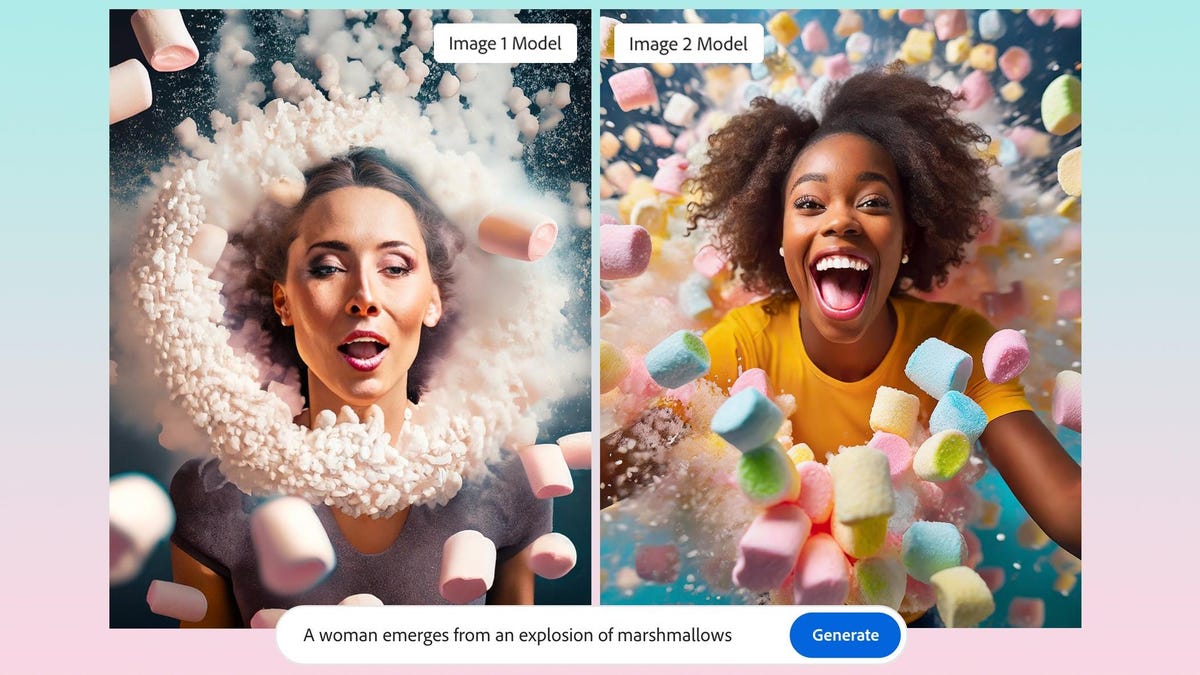Adobe just shared a full public release of its Firefly AI tools last month, but the company isn’t nearly done giving the AI hype train a big push down the tracks. During its Adobe Max conference, the company said that the original Firefly AI model is already old hat after just five months in beta. Now we have the AI art generator dubbed Firefly Image 2 Model, plus a heap of other text-to-image capabilities in Adobe Illustrator and Express.
At the top of the AI heap is what’s been dubbed “Project Stardust.” Despite the name sounding like a militarized Neil Gaiman novel, the tool is more akin to Google’s Magic Eraser than any of the company’s current AI abilities like Generative Fill and Generative Expand. As first revealed in a teaser video last week, the tool can detect objects in a photo which users can then manipulate by dragging it around the frame or deleting it. Adobe claimed it would also delete the shadow from the object and replace the missing pixels with realistic AI generation.
Google shared some very similar features it plans to add to Magic Eraser at last week’s Made by Google event, though Adobe is promoting that users can use Generative Fill to add new objects to the images. Plus, Stardust should be able to identify objects in an image with a text prompt. Adobe’s version should also allow users to resize and re-color objects in a photo using text prompts.
To make Generative Fill a bit more robust, Adobe said its new Image 2 Model creates better quality images with more accurate human figures that don’t look as plastic-y or oddly shaped as they previously did. The new text-to-image model should be able to create better details like pores or foliage, plus it can better handle the depth of field generation to enable images that look a bit more realistic if you’re set on making the best deepfake possible.
The AI should also be much better at recognizing major cultural landmarks and symbols. Users will have the ability to adjust different photo settings like motion blur, field of view, and more when creating an image. Image 2 also includes a Generative Match feature which can apply the “style” of a separate image to a new AI-created photo “at scale.”
Adobe says this will save users time, though in order to beat back any copyright questions Adobe is requiring users to confirm if they have the rights to use the generative match image. Of course, a simple confirmation won’t stop everybody, so we’ll have to see how much Generative Match does to recreate either style or substance of the original image.
AI in Adobe Illustrator and Express
Adobe isn’t stopping at slipping AI into Photoshop or Essentials. Now users should be able to use a prompt to generate a vector in Illustrator and a template in Express.
The Firefly Vector model includes the Generative Match feature as well as the ability to create editable vector gradients. The feature is very similar to what already exists in Photoshop, but the system is now being applied to generate “human quality” vector graphics and patterns. Adobe shared an image of a graphic t-shirt sporting an image of an astronaut cat generated through the Firefly Vector model. The commercial aspect of AI is still up in the air, especially as U.S. officials have said nobody can copyright AI-generated content.

The Adobe Express design is similar, but it also includes generated text as well as images made into editable designs. A prompt like “rainbow aura fashion show” creates several posters that include full names and taglines attached to fake, AI-generated people and clothing.
Firefly is still based completely on the content found within its Adobe Stock library, a similar approach to what we’ve seen from Shutterstock and now Getty Images’ AI art generator. Adobe has been unwilling to share much about its AI model, so we don’t know the full scope of its training data compared to other AI art generators like DALL-E or Stable Diffusion XL. It’s led some to speculate Adobe’s model would be limited by the lack of available images compared to the terabytes of data used to train other popular AI.
Adobe is trading off having more training data for the legal safety of using images for which it holds the rights. Still, Adobe hasn’t been entirely open about how it plans to pay contributors for using their content to train AI other than a once-a-year bonus based on the number of images, vectors, or illustrations gobbled up for AI training. None of the popular stock image sites have been open about how much they plan to pay contributors.

